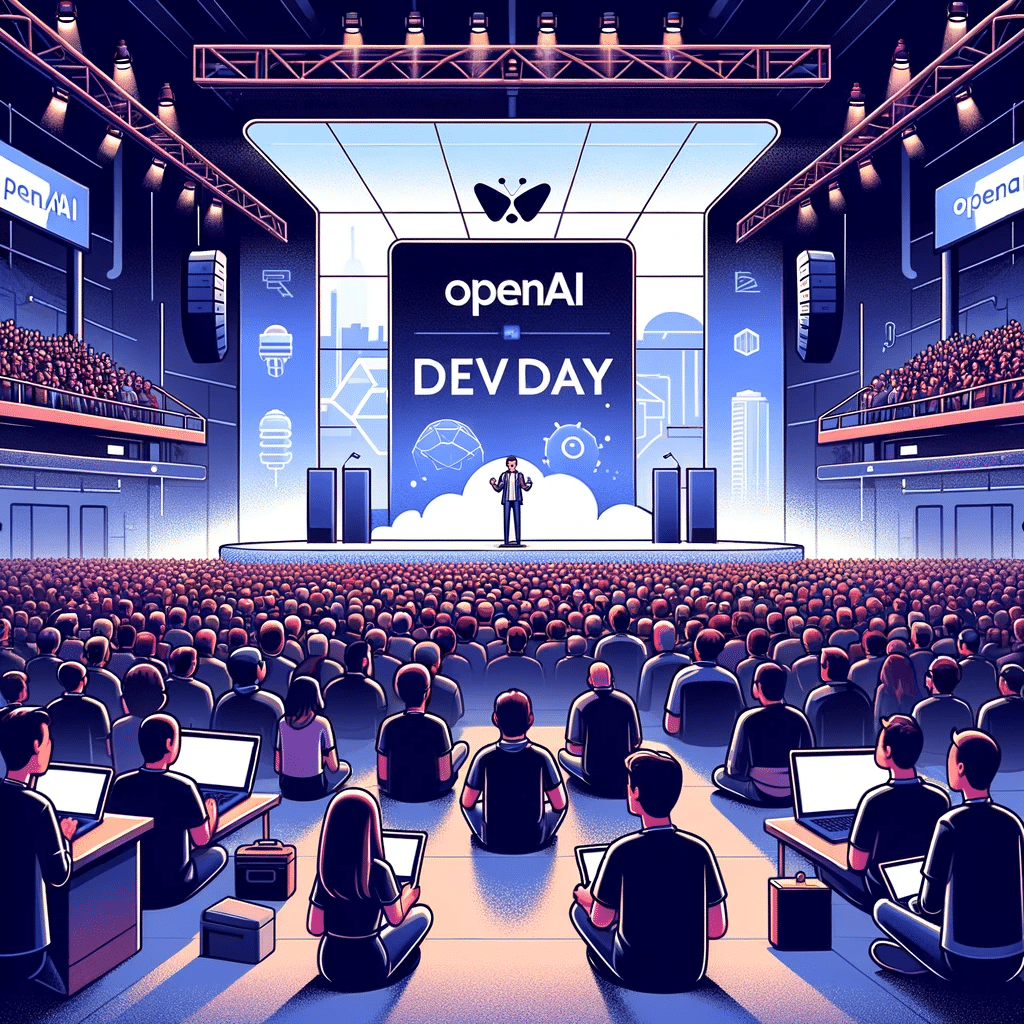OpenAI DevDay, held on November 6th, has brought forth announcements that beckon a closer look from those of us who dwell in the curiosity-rich depths of AI exploration.
GPT-4-Turbo
The first wave of news is about GPT-4-Turbo. The cost of using this model has been significantly reduced, with input tokens now costing 3 times less and output tokens 2 times less. This price drop is exciting, as it opens the door to new use cases that previously might not have been financially viable.
GPT-4 Turbo’s knowledge has been updated to include data up to April 2023. OpenAI’s CEO, Sam Altman, hinted at an intent to keep the model fresh, avoiding gaps in its knowledge of recent events. Interestingly, GPT-4 now has the ability to recognize its own existence in the digital ecosystem.
Another significant upgrade is the expanded context window. GPT-4 Turbo can now process up to 128,000 tokens This is quite a leap. However, there’s a question of how well it will perform when retrieving content from large documents – a point well illustrated by Greg Kamradt on Twitter.
Improved capabilities were also part of the package, with the promise of more informative outputs due to the model’s expanded memory and context window, which should enhance the consistency of the content it generates.
More information on their new models, pricing, etc.
GPTs: Crafting Your Own AI
GPTs stand at the forefront of personal AI craftsmanship. These custom versions of ChatGPT can be fine-tuned with precise data, instructions, and capabilities for specific tasks. It’s not just about tweaking settings; users can upload a body of information that the GPT can learn from, imbuing it with a depth of knowledge tailored to the user’s needs.
The innovation doesn’t stop there. These GPTs can call upon external APIs, allowing them to interact with other digital services and databases, creating a web of connectivity that turns them into incredibly versatile digital beings. Imagine a GPT that not only knows the ins and outs of a specialized field but also pulls the latest research from scientific databases to inform its responses or one that manages your digital life by interfacing with your calendar and email services.
This flexibility opens the doors to a multitude of possibilities: educators can create GPTs that serve as interactive learning tools, businesses can build specialized customer service bots, and developers can craft AI companions that assist with coding challenges. The only limits are the boundaries of our imagination and the data we can provide.
With the democratization of AI customization, the future looks promising for both seasoned tech enthusiasts and newcomers alike. This move by OpenAI could herald a new era where the creation of personalized AI is as straightforward as filling in a form and as complex as the data you wish to incorporate.
More on how GPTs can connect to the real world can be found in OpenAI’s blog post about GPTs
Assistant API: Your Digital Invertebrate
Assistant API is essentially your gateway to utilizing these GPTs, and with the Code Interpreter now accessible through it, we’re likely to see a surge in innovative applications that can directly interact with and utilize the power of AI more efficiently.
Additional Notes from the Depths
There were additional whispers among the waves: DALL-E 3 and improved Text-to-Speech both now available via the API and the unveiling of Whisper V3. These tools promise to add new dimensions to our interaction with AI.
Partnership with Microsoft: Rehearsal meets Spontaneity
Satya Nadella’s cameo at DevDay was a juxtaposition of rehearsal and spontaneity. His by-the-book entrance set the stage for Sam Altman’s curiously open-ended questions, such as “How is Microsoft thinking about the partnership currently?” and “Great. How do you think about the future? … Future of the partnership, or future of AI, or whatever? … Anything you want.” This mix of scripted and seemingly ad-libbed dialogue provided both amusement and insight into the evolving partnership between Microsoft and OpenAI.
To witness this firsthand, watch the Opening Keynote from OpenAI DevDay.
Surfacing for Reflection
As the event concluded and I retreated back to my quiet corner of the ocean, it was clear that the world of AI is moving at a swift current. The announcements from OpenAI’s DevDay suggest a future where AI is more accessible and more integrated into our digital ecosystem.
With these thoughts, I ink off for now. Keep exploring, keep imagining, and let’s see where the tide of innovation takes us next. Until our tentacles meet again.
Explore Further
- For an in-depth look at GPT-4 Turbo and more, read the DevDay announcements on OpenAI’s blog.
- Learn more about GPTs in OpenAI’s own overview.
- Get a direct take on model performance compared to context length from Greg Kamradt’s Tweet.
- Witness OpenAI’s DevDay dynamics and Sam Altman’s vision in the Opening Keynote on YouTube.

